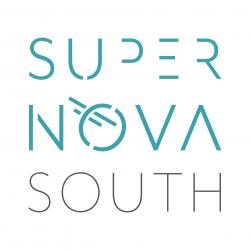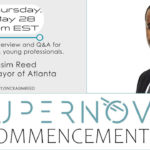Speaker Spotlight: Sunil Nagaraj on the State of Space Technology
From watching TV to mapping where to go, we use technologies developed for space everyday here on Earth. In our upcoming conference session, “It Came From Space,” VC Sunil Nagaraj will share how space commercialization is shaping the future of smart innovation.
As a venture capitalist and board member of the Astronomical Society of the Pacific, Nagaraj has become an expert in the evolving industries associated with space technology. He is well-versed in smart hardware and machine intelligence applications as an outcome of his six years in his previous role as an investor with Bessemer Venture Partners.
Here, Nagaraj shares about the state of space tech, why the solar eclipse is such a big event, and why his talk at SuperNova South will be out of this world.
How do we benefit from existing space commercialization?
Space is primarily used in three ways: communication, Earth observation, and navigation.
Satellite-based communication enables much of the TV, internet and phone connectivity we enjoy on a daily basis. In fact, a large portion of the space economy is driven by the 200 million satellite TV subscribers and the geostationary satellites that they depend on. With regard to Earth observation or “remote sensing,” space offers a unique vantage point for us to monitor what’s happening on Earth for uses in weather prediction, agriculture, commerce, and defense. Navigation is enabled by space via the 24 GPS satellites that we use to power Google Maps, car navigation, and more.
What does the future of space technology look like?
We are still early in the development of what is often called “newspace.” Lower cost electronics, less expensive launch options, the standardization of space technologies, and other trends are driving this boom. There continue to be many opportunities in remote sensing and communication as well as emerging areas like microgravity research and production.

Tell us about your background working with space tech startups.
For the last few years, I have been actively involved in space tech startups that are capitalizing on the exciting trends that make space more accessible to business. While I was at Bessemer we invested in two small satellite startups, Terra Bella (formerly Skybox Imaging) and Spire, as well a rocket startup called Rocket Lab. Those were the culmination of hundreds of meetings with space startups as there is truly a renaissance of innovation going on in this sector.
What takeaways will people get from your forthcoming talk at SuperNova South?
At SuperNova South, I will share more about why VCs are actively investing in newspace and what parallels this has to other areas of smart hardware, including internet of things. As an entrepreneur-turned-VC, I want to pull back the curtain on VC decision-making so entrepreneurs can navigate the process more effectively. I will go through the core framework of venture investing and how both newspace and smart hardware startups can set themselves up for success in the financing process.
Lastly, since it’s such a major astronomical event, tell us why the upcoming solar eclipse is so exciting?
This is truly a special event. Out of 150+ moons around planets in our solar system, only one is in exactly the right place to make this happen. What that means is that our moon is 400 times smaller than the sun and almost exactly 400 times closer than the sun. This creates an amazing celestial event: if you are in exactly the right spot on Earth on August 21, a perfectly sunny day will get black as night for about 2 minutes. The temperature will drop, the stars will come out, and animals will act funny. A solar eclipse hasn’t crossed the entire US in 99 years so it’s quite a treat. Despite crossing the whole country, the eclipse path is only about 70 miles wide so I recommend making the trip to see this very special event.
Header Image Source: The Business Journals




